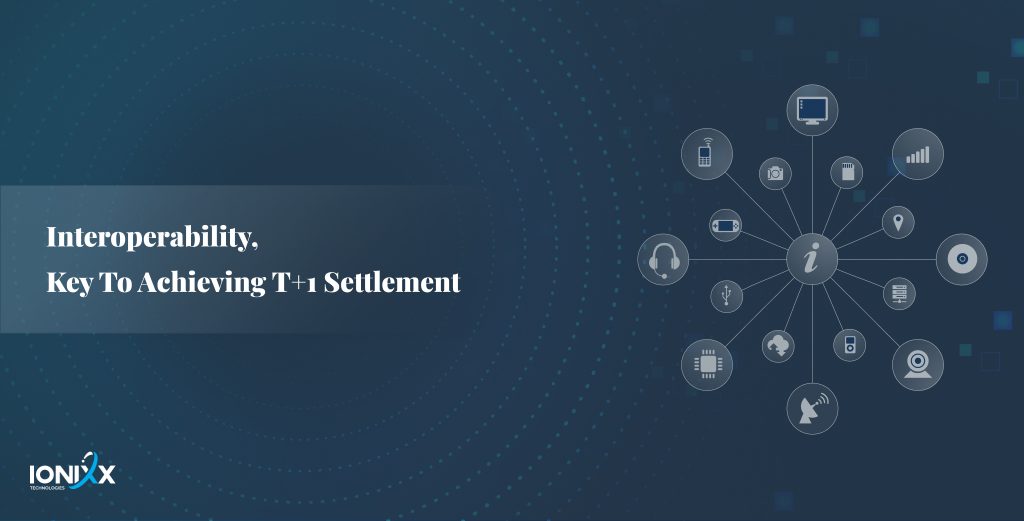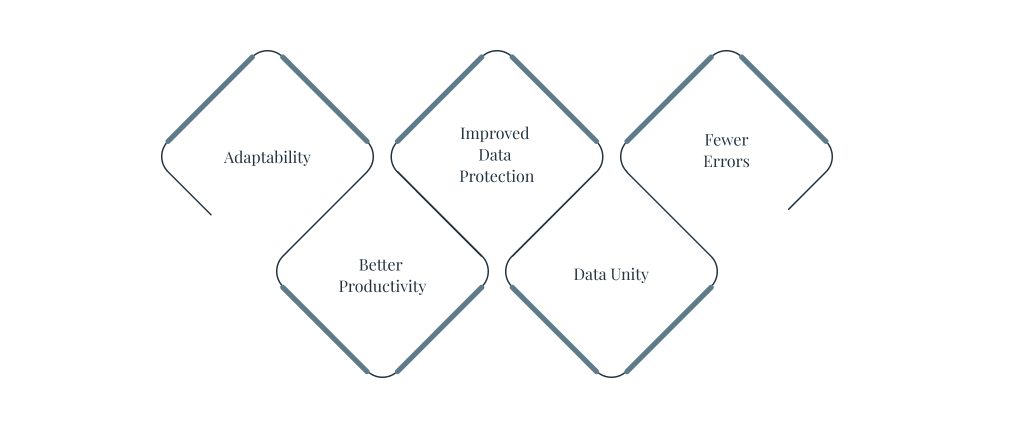
Interoperability is a pivotal factor in smoothly adopting a T+1 settlement cycle in financial markets, where securities transactions settle just one day after the trade date. In this context, interoperability entails establishing seamless collaboration among different stakeholders, infrastructure providers, and systems to facilitate the shorter settlement cycle effectively.
Interoperability hinges on the harmonious operation of systems utilized by diverse market participants, encompassing broker-dealers, clearinghouses, custodians, and other intermediaries. Overcoming the challenge of enabling these systems to communicate efficiently in support of a T+1 settlement cycle is paramount.
Establishing interoperability among diverse clearing and settlement systems spanning various asset categories and markets represents an intricate yet pivotal endeavour when transitioning to a T+1 settlement cycle within financial markets.
How Interoperability Can Be Achieved For T+1 Settlement
1. Data Standardization for Interoperability
DTCC published a white paper on data strategy management in financial markets. This proves a point about the need for standardizing data to achieve interoperability.
Data standardization plays a vital role in achieving interoperability within financial markets. So, standardizing data formats and communication protocols is indispensable to facilitate the seamless and precise exchange of trade and settlement information among diverse market participants, systems, and platforms.
To effectively establish data standardization for interoperability it often requires extensive industry-wide cooperation and consensus. Standards organizations, industry consortia, and regulatory bodies may take on the responsibility of creating and endorsing common data standards, which can be universally embraced across financial markets. These standards encompass a wide range of data, including trade data, settlement instructions, reference data, and more, significantly enhancing efficiency and interconnectedness within the financial ecosystem.
2. Regulatory Frameworks for Interoperability
The imperative for a transition to a T+1 settlement cycle and the achievement of seamless interoperability across financial markets may necessitate pivotal adjustments or harmonization within regulatory frameworks. Regulators bear the crucial responsibility of collaborating closely with market participants to ensure the harmonization of regulatory requirements, thus fostering consistency and facilitating the transition process.
In this context, regulatory adjustments and harmonization emerge as indispensable mechanisms that underscore the transition towards a T+1 settlement cycle and the attainment of robust interoperability. Regulators, adopting a proactive risk management approach, must work in tandem with market participants to ensure that regulatory stipulations remain not only consistent but also conducive to the efficient and secure execution of settlement processes. This regulatory support and oversight stand as pivotal components in the successful realization of a T+1 settlement cycle and the overarching goal of cultivating a more efficient and resilient financial ecosystem.
Navigating T+1 Settlement: The Role of Risk Management And Collateral Optimization
Efficient risk management practices and the optimization of collateral play pivotal roles in realizing the goal of a T+1 settlement cycle within an interoperable system. However, these components are essential for market participants as they navigate the intricate landscape of rapid settlement cycles, diverse counterparties, and interconnected clearing and settlement systems.
Their function is not only to ensure the seamless and secure settlement of trades across diverse markets and asset classes but also to address the challenges posed by interoperability. Achieving a successful transition to T+1 settlement necessitates meticulous planning, strategic investments in technology and infrastructure, and continuous collaboration among industry stakeholders and regulatory bodies. This approach ensures that the advantages of reduced settlement time are harnessed while mitigating operational and systemic risks.

It involves establishing connections and interfaces between clearing and settlement systems that operate in different markets and across various asset classes. These connections enable the seamless transfer of trade data, settlement instructions, and collateral across markets, facilitating T+1 settlement and enhancing the efficiency of the overall clearing and settlement process. Overall, interoperability connections between clearing and settlement systems are pivotal in creating a more efficient, interconnected, and accessible financial ecosystem. They allow market participants to leverage opportunities across diverse markets and asset classes while optimizing risk management, collateral allocation, and settlement processes, ultimately supporting T+1 settlement and enhancing the competitiveness of financial markets.
Interoperability in The Context of Financial Markets
Finally,
In the journey towards a T+1 settlement cycle, establishing interoperability among clearing and settlement systems is a multifaceted yet indispensable undertaking. It demands extensive cooperation, standardized processes, and meticulous strategizing involving market participants, infrastructure providers, and regulatory bodies. This collective effort is pivotal in unlocking the advantages of swifter settlement without compromising the stability and trustworthiness of financial markets. To learn more about the interoperability and technologies that help in integration, visit our digital brokerage page.


